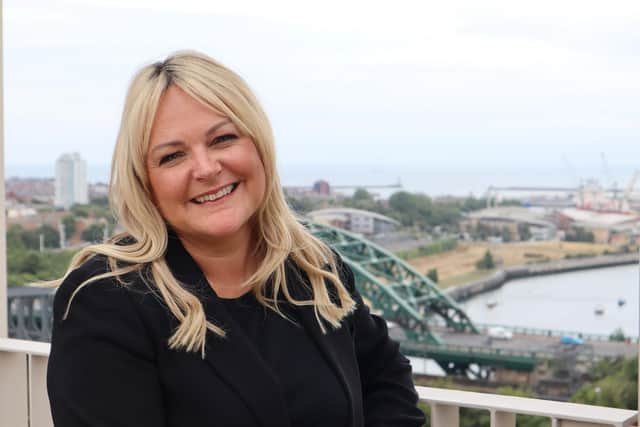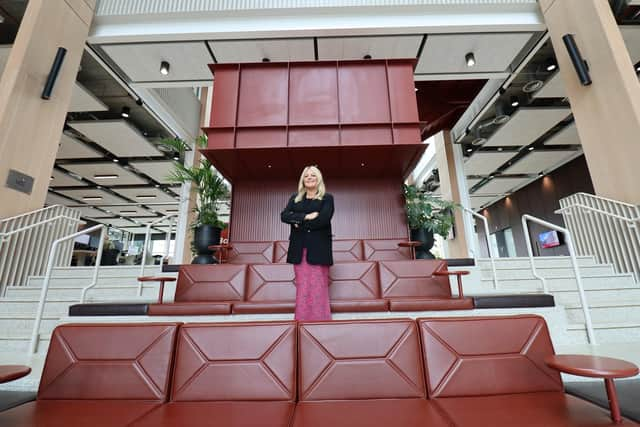30 years on: The story behind the bid to make Sunderland a city – three decades of economic and social change
and live on Freeview channel 276
Thirty years ago, an 18-year-old Beverley Poulter sat down in Sunderland Civic Centre, as part of the team tasked with preparing a bid to establish Sunderland as Britain’s newest city.
A moment of opportunity was upon Sunderland. Just eight years from the opening of Nissan’s game-changing plant at Washington, the building sense of unity across the three boroughs of Sunderland, and huge investment spilling into business parks like Doxford International felt as though city status would bring about the many benefits now needed to establish Sunderland regionally, nationally and internationally.
Led by the then-assistant chief executive of the council, Phil Wright, a small team built the case for city status, emboldened by the will of thousands of people ready to see a change in their home town.


“There was definitely a mood of change and opportunity in the air,” said Bev, who now works as a senior strategy manager within the corporate affairs team at the council.
“After years of decline – and with all the indicators of deprivation we had at that time - there was a sense of a step change coming to Sunderland. Nissan had given us a huge confidence by choosing to locate its plant in Washington, and we had the Polytechnic transforming into a University at the same time. Meanwhile, new communities were establishing themselves, and eco-systems building in places like Doxford Park, which started to see its first contact centres emerge at the turn of the 90s. There was a definite feeling that it was Sunderland’s time and that city status would augment that and help us land more big investment, attract more businesses, and create prosperity that would benefit our people – which is ultimately what it’s all about.”
Looking to the future
Putting the industrial decline of the 80s behind it, the city developed its bid, making the case for the many opportunities that city status would unlock, as well as the challenges it would help to resolve.


“There was absolute confidence amongst us that we would secure this status for Sunderland,” Bev says.
“Our people deserved it. They’d been hugely resilient in the face of such adversity following the decline of heavy industry, and I think they were all energised by the opportunity to live in a young ambitious city. They recognised the economic advantages it would bring. They understood that we were a changing place and that the component parts of Sunderland, Washington and the Coalfields were beginning to gel in a really exciting way.
“And I think there was a sense of pride. The sense that Sunderland should be recognised alongside its near-neighbours of Durham and Newcastle as a regional driving force, particularly with Nissan as part of our business community, and the role it was beginning to play in powering the wider region‘s economic resurgence as the supply chain spun out of it. It was Sunderland that was absolutely at the beating heart of the North East economy.”
Bev remembers well hearing the news that the city had secured its new-found status in 1992.
“It was a really exciting time. People had got behind the bid for city status in a big way, and having it confirmed was a time to celebrate all the things that make Sunderland a great place.
“Retailers and restaurants joined in the celebrations, coming up with offers to get people exploring their city. Everybody wanted to be part of the activity; to play a part in celebrating.”
Bev also fondly remembers the build up to the Queen’s visit, when Sunderland was officially given its status as Britain’s newest city.
“There was an air of excitement. I think everybody basked in the limelight that city status afforded Sunderland – having gone through some tough times, this was a new dawn for us and I think people were incredibly proud to welcome Her Majesty The Queen, and to show that we were bouncing back from the industrial decline of the Eighties.”
So how has Sunderland changed in the time it has been a city?
“It really does feel like so many of the ambitions we had for Sunderland at the outset of writing the city bid have been realised.
“We felt really strongly that it would cement Sunderland in the mind of investors, looking for a place to build their business. The growth we’ve seen in the ecosystem around Nissan, the development of our digital cluster, the prevalence of contact centres which provide thousands of customer service jobs across the city, and the amazing university campuses that have been built, all point to the proliferation of an investor-friendly location.
“I think, over the last few years, there is the same sense of transformation, belief and ambition that there was at the time that Sunderland became a city.
“It felt at that moment as if Sunderland was on the cusp of change, and I really do feel that again now. The skyline has changed significantly over the last 30 years, but never more than in the past three or four years, when we have seen huge waves of investment spilling into the heart of our city. And there’s so much more to come.
“As we mark 30 years of city status, I could not be prouder to be from this great place and to continue to play a part in its economic and social development.
“When we talk to senior Government officials, and indeed Ministers to share Sunderland’s story with them and work in partnership to build on the positive change we have seen, what we hear played back to us is such a positive narrative. They don’t often come across other cities or places with our spirit and energy. They haven’t seen other places that have the vision that we have in Sunderland and are always hugely impressed at how we are making it an exciting reality.
“I think, 30 years on, having built our way out of industrial decline and formed a new, more resilient economy and more resilient communities, it feels like we’re ready for the next chapter; that we’re on the precipice of the next big period of transformation for Sunderland. I can’t wait to see what the next 30 years hold, and ultimately, the thing that excites me is the way in which the change we’re seeing will change lives for people in Sunderland. That’s when we will know that it’s all been worth it.”
Learn more about Sunderland’s transformation over the last 30 years at www.mysunderland.co.uk/30years